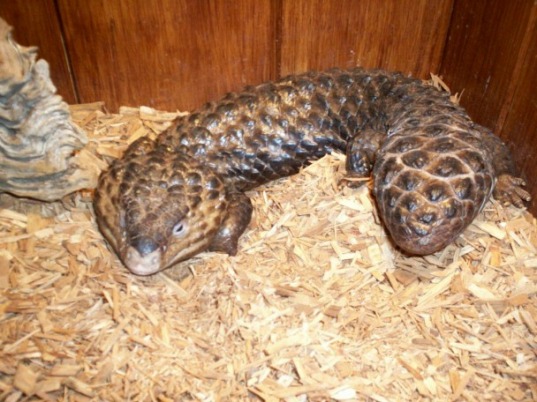The stump tailed skink ( Trachydosaurus rugosus) is a species of skink found in Australia. It is even found on the Rottenest island. It is locally common and not threatened.
Physical Features
 |
| Tongue of a stump tailed skink |
Diet
The stump tailed skink is mainly omnivorous. The regularly eat vegetables and plants but eat snails, insects and carrion also.
Distribution and Habitat
The stump tailed skink's main habitat is dry woodland and semi-arid areas. They are mainly found in Southern Australia from New South Wales to the coast of the state Western Australia. They are aslo found in the Rottenest island off coast of Western Australia.
Breeding
Females reproduce 1 to 2 young each year with a gestation period of 5 months
Common names
The other names for the stump tailed skink are-
Boggi which is a local name, sleepy lizard, pine cone lizard, bob tailed lizard and shingleback lizard.
Conservation Status
The stump tailed skink is currently not threatened and is not listed as a threatened species in IUCN.
Source of pic 1 and pic 2


